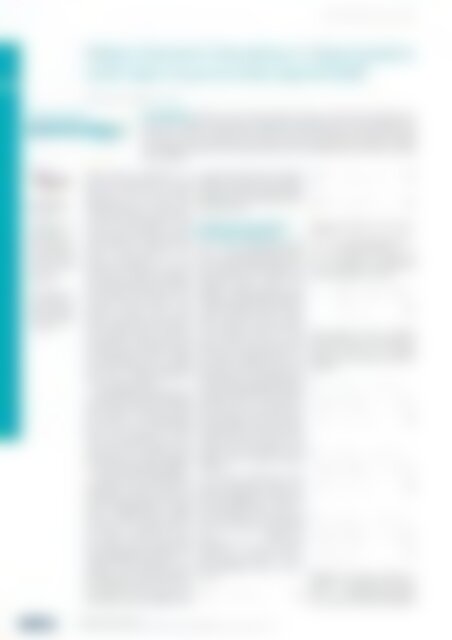atw - International Journal for Nuclear Power | 10.2020
Description Ever since its first issue in 1956, the atw – International Journal for Nuclear Power has been a publisher of specialist articles, background reports, interviews and news about developments and trends from all important sectors of nuclear energy, nuclear technology and the energy industry. Internationally current and competent, the professional journal atw is a valuable source of information. www.nucmag.com
Description
Ever since its first issue in 1956, the atw – International Journal for Nuclear Power has been a publisher of specialist articles, background reports, interviews and news about developments and trends from all important sectors of nuclear energy, nuclear technology and the energy industry. Internationally current and competent, the professional journal atw is a valuable source of information.
www.nucmag.com
You also want an ePaper? Increase the reach of your titles
YUMPU automatically turns print PDFs into web optimized ePapers that Google loves.
<strong>atw</strong> Vol. 65 (2020) | Issue 10 ı October<br />
RESEARCH AND INNOVATION 514<br />
Planned entry <strong>for</strong><br />
This work is funded<br />
by the German<br />
Federal Ministry of<br />
Economic Affairs and<br />
Energy under grant<br />
number 1501579 on<br />
the basis of a decision<br />
by the German<br />
Bundestag.<br />
The simulations are<br />
per<strong>for</strong>med with the<br />
code version Open-<br />
FOAM-v7 developed<br />
by the OpenFOAM<br />
Foundation.<br />
Water Hammer Simulation in Pipe Systems<br />
with Open Source Code OpenFOAM<br />
Paul Fuchs and Marco K. Koch<br />
Water hammer phenomena can<br />
generally be divided into two main<br />
parts, the direct and the indirect<br />
phenomena. For the direct water<br />
hammer phenomena, a shock wave<br />
is induced due to the sudden deceleration<br />
of a fluid leading to a local<br />
rise in pressure. The shock wave then<br />
travels through the pipe system and<br />
effects like wave reflection, interference,<br />
superposition are to be<br />
concerned. Furthermore, the valve<br />
closure time as well as the de<strong>for</strong>mation<br />
of the pipe influences the quality<br />
and quantity of the shock wave. On<br />
the other hand, the indirect water<br />
hammer is induced when a local<br />
pressure drop below vapor pressure<br />
leads to evaporation and creation of<br />
steam bubbles. When the pressure<br />
rises again above vapor pressure and<br />
especially big steam bubbles implode<br />
the surrounding water is rapidly<br />
accelerated causing a secondary shock<br />
wave once a sudden deceleration<br />
occurs at impact. [LUE13]<br />
To gain sufficient knowledge of the<br />
important physical effects regarding a<br />
water hammer phenomena detailed<br />
CFD analysis are per<strong>for</strong>med using<br />
the open source code OpenFOAM.<br />
Effects like propagation of shock<br />
waves, cavitation and fluid structure<br />
interaction will be included in the<br />
code as there is no default capability<br />
to model such phenomena. [GRE19]<br />
In order to test the applicability of<br />
the default code as well as the newly<br />
implemented cavitation model two<br />
water hammer experiments at the test<br />
facility “Heißdampfreaktor” (HDR)<br />
will be modelled under simplified<br />
conditions. The implementation of<br />
the cavitation model basis within<br />
the Volume of Fluid (VOF) based,<br />
fully compressible, multi fluid solver<br />
compressibleMultiphaseInterFoam is<br />
described also discussing model<br />
strength, restrictions and weaknesses.<br />
The simulation results <strong>for</strong> the two<br />
experiments will be compared with<br />
and without cavitation model in order<br />
Introduction During a loss of coolant accident (LOCA) in certain types of boiling water<br />
reactors the continuous undersupply of cooling water eventually leads to the degradation of the<br />
reactor core. In order to prevent such an accident, the loss of cooling water is prevented through<br />
fast closing valves in the cooling circuit. However, the valve closing process can induce a so called<br />
water hammer phenomena in the pipe systems which can damage structures within the cooling<br />
circuit. [GIO04]<br />
to qualify and quantify the cavitation<br />
influence during the water hammer<br />
phenomena. At the end potential code<br />
improvements and upcoming work is<br />
shortly presented.<br />
Model basis and cavitation<br />
model implementation<br />
The Volume of Fluid (VOF) based<br />
solver compressibleMultiphaseInter-<br />
Foam is fully compressible as density<br />
can be computed with multiple accessible<br />
equations of state (EOS) also<br />
regarding thermal effects. The<br />
interface tracking method between<br />
multiple non mixable fluids allows <strong>for</strong><br />
a detailed representation of interface<br />
motion including surface tension<br />
effects. However, the mesh resolution<br />
at the interface needs to be very<br />
high in order to give accurate results<br />
leading to high computational costs<br />
<strong>for</strong> complex multiphase flows. In<br />
general, this method is used <strong>for</strong> free<br />
surface flows or in combination with<br />
so called mixture models to model the<br />
free surface of bigger bubbles within a<br />
continuous fluid. In this study the<br />
VOF method is used to model the free<br />
surface between water and steam in<br />
the upper RDB as well as macroscopic<br />
cavitation effects in the check valve<br />
region and in the pipe system as mass<br />
transfer across the interface is well<br />
described <strong>for</strong> this method. [WAR13]<br />
[GRE19]<br />
In order to model the water<br />
hammer experiments without temperature<br />
driven phase change in the<br />
upper RPV (Figure 3) a continuous<br />
non-condensable steam phase a g<br />
(eq. 3) is considered. For the pressure<br />
driven phase change a mass transfer<br />
term<br />
regarding the<br />
condensation rate and vaporization<br />
rate is added to the continuity<br />
equation <strong>for</strong> water a l (eq. 1)<br />
and condensable steam a v (eq. 2)<br />
[YU17]:<br />
<br />
(1)<br />
<br />
<br />
(2)<br />
(3)<br />
Using the expansion of the convection<br />
term<br />
and expressing the time<br />
plus the advective derivative<br />
as the resulting set of equations<br />
can be summed to <strong>for</strong>mulate the<br />
velocity divergence as [YU17]<br />
<br />
(4)<br />
With equation 4 and an artificial<br />
compression Term C to keep interfaces<br />
sharp the final set of transport<br />
equations can be expressed as [YU17]<br />
[GRE19]:<br />
<br />
<br />
<br />
(5)<br />
(6)<br />
(7)<br />
Similarly the pressure equation is<br />
modified by subtracting the source<br />
term from the incompressible<br />
part leading to following <strong>for</strong>mulation<br />
Research and Innovation<br />
Water Hammer Simulation in Pipe Systems with Open Source Code OpenFOAM ı Paul Fuchs and Marco K. Koch

















